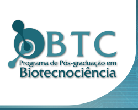Banca de QUALIFICAÇÃO: WILFREDO RONDAN HUAMAN
Uma banca de QUALIFICAÇÃO de DOUTORADO foi cadastrada pelo programa.STUDENT : WILFREDO RONDAN HUAMAN
DATE: 14/02/2025
TIME: 10:00
LOCAL: Sala 406 do Bloco B do Campus de Santo André da Universidade Federal do ABC
TITLE:
Synthesis and characterization of graphene family nanomaterials and its potential agriculture applications
PAGES: 80
BIG AREA: Outra
AREA: Multidisciplinar
SUMMARY:
In this work, graphene family nanomaterials (GFNs), such as multilayer graphene (MLG) and graphene oxide (GO), are studied for their potential applications in agriculture and their effects on biological systems. The GFNs were synthesized using methods such as liquid-phase exfoliation and modified Hummer's method, followed by extensive characterization by XRD, Raman spectroscopy, SEM, TEM and FTIR. These analyses revealed key structural and chemical differences, such as oxidation level, layer thickness and crystallinity, which influence their biological interactions. The study evaluated the impact of GFNs on bacteria (Escherichia coli and Staphylococcus aureus), human cell lines (A549 and L929), microalgae (Chlorella vulgaris), and plants (Lactuca sativa and Solanum lycopersicum). Results indicated that: Bacterial Toxicity, GFNs displayed antibacterial properties, with notable inhibition zones observed in E. coli and S. aureus cultures. Cytotoxicity, human cell lines exhibited reduced viability at higher GFN concentrations, confirming a dose-dependent cytotoxic effect. Microalgae (C. vulgaris), growth rates showed a concentration-dependent response, with low GFN concentrations (C1 and C2) enhancing growth slightly, while higher concentrations (C4) led to significant inhibition. For example, the growth rate decreased by 1.35-fold under 5h-LSGO and 4.57-fold under 1h-LSGO at C4 compared to the control. Plants (S. lycopersicum and L. sativa), GFNs improved germination and root elongation at lower concentrations, demonstrating potential as growth stimulants. However, at higher concentrations, inhibitory effects on germination and antioxidant activity were observed. The findings highlight the dual role of GFNs as both growth promoters and inhibitors, depending on their concentration and functionalization. At low concentrations, GFNs enhanced plant growth and photosynthetic pigment production, while higher concentrations led to oxidative stress and morphological damage in plants and microalgae.
COMMITTEE MEMBERS:
Presidente - Interno ao Programa - 1831780 - DANILO DA CRUZ CENTENO
Membro Titular - Examinador(a) Interno ao Programa - 1762438 - JEAN JACQUES BONVENT
Membro Titular - Examinador(a) Externo à Instituição - PRISCILA CORREIA FERNANDES - ITA
Membro Suplente - Examinador(a) Interno ao Programa - 1844792 - AMEDEA BAROZZI SEABRA
Membro Suplente - Examinador(a) Externo à Instituição - DAVINSON MARIANO DA SILVA




